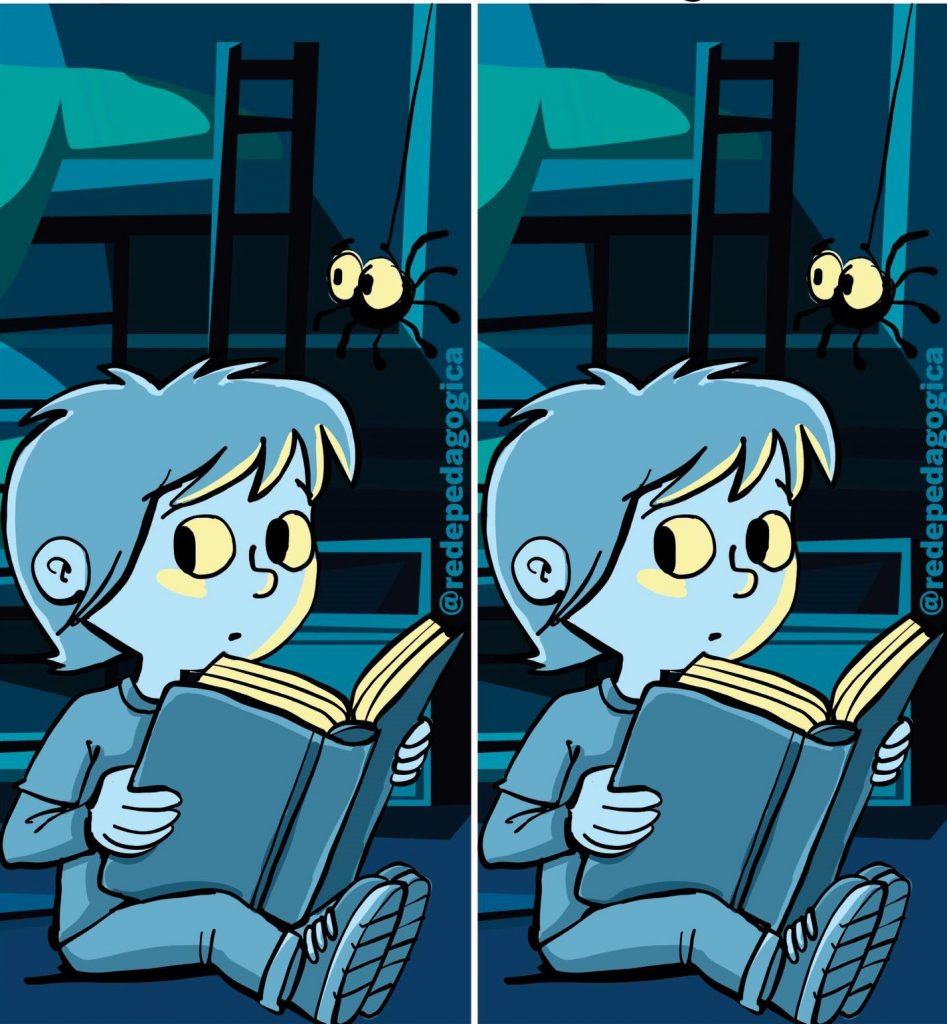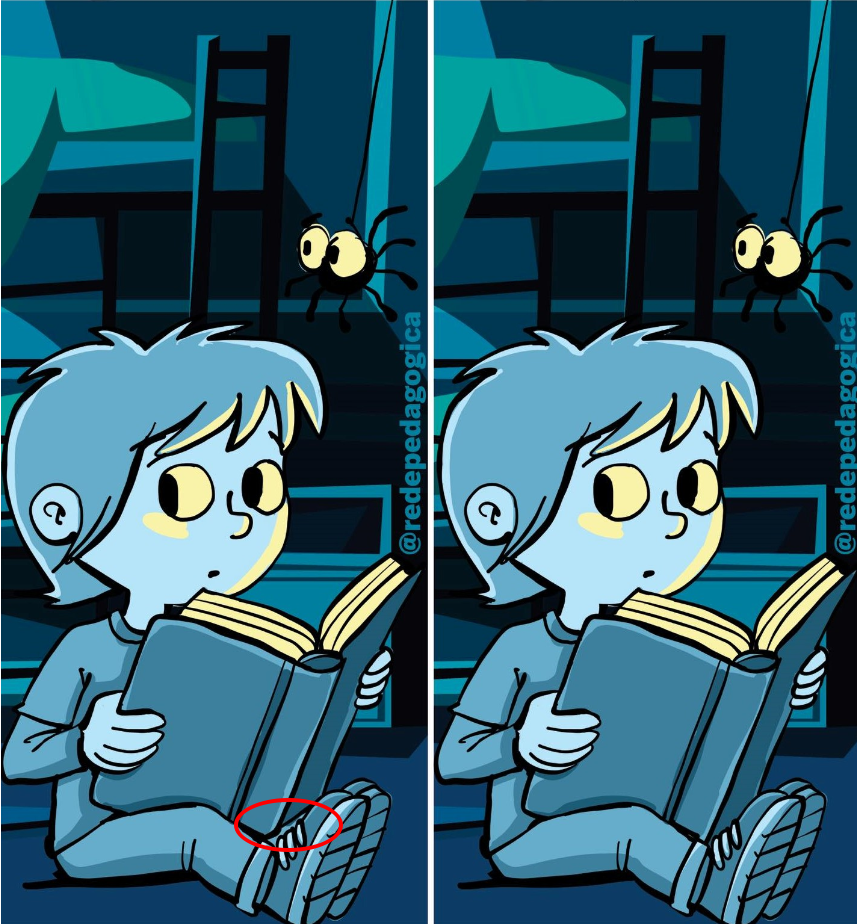Spot the Difference: Cognitive and Entertainment Benefits of Visual Puzzles
When was the last time you picked up a “spot the difference” puzzle? If you’re anything like me, it’s been a while, and honestly, it’s about time to revisit these fun and engaging games. At first glance, they seem like just a lighthearted activity, but as we’ll discover, they offer much more than meets the eye. Whether it’s honing your attention to detail, boosting your memory, or simply providing a much-needed mental break, “spot the difference” puzzles bring cognitive benefits that you might not have considered. In this article, we’ll delve into the multiple ways these puzzles challenge your brain and why they’re more than just an entertaining way to pass the time.

What Is a “Spot the Difference” Puzzle?
For anyone unfamiliar with the concept, a “spot the difference” puzzle typically presents two images that seem nearly identical, but they contain small discrepancies. The goal is to identify the differences between the two. The images are often colorful, whimsical, or highly detailed, which makes spotting the differences both challenging and rewarding.
Take, for example, the image of a child reading a book, where a spider lurks above them in the corner of the room. The two versions of the image may look nearly identical, but upon closer inspection, differences can be found—perhaps in the positioning of the spider or small changes in the book. These kinds of puzzles train you to think critically, observe closely, and process visual information effectively.
The Cognitive Benefits of “Spot the Difference” Puzzles
1. Sharpening Focus and Attention to Detail
The most obvious benefit of these puzzles is the improvement in focus and attention to detail. As you compare two images side by side, you train your brain to zone in on the finer points—something that is crucial in both daily life and professional settings. Whether you’re reading a contract, solving a problem at work, or simply looking for that missing sock, paying attention to small details becomes second nature after playing these games.
In the “spot the difference” puzzle above, you must pay attention to the spider, the book, the lighting in the room, and the environment around the child. The more you practice, the better you get at noticing even the smallest discrepancies. Over time, this heightened awareness spills over into other aspects of life, improving your ability to stay focused and catch important details.

2. Boosting Visual Perception
Visual perception is the brain’s ability to interpret and process visual information. These puzzles are perfect for improving that skill. You may find that after playing for a while, your ability to discern between various shapes, sizes, and patterns improves. This ability is essential not only for puzzle-solving but also for other visual tasks like driving, reading, and recognizing faces.
When playing “spot the difference,” your brain processes visual clues at a faster rate, making it more efficient in recognizing patterns and identifying subtle changes. As you improve your visual processing skills, you’ll find that everyday tasks become easier to manage as well.
3. Strengthening Memory and Recall
Memory recall is another key area impacted by “spot the difference” puzzles. When you look at two images, your brain must retain details from the original image in order to compare and contrast. This process exercises both short-term and long-term memory as you recall visual elements and their original placements in the first image.
In the example image, as you look at the child and the surroundings, your brain is actively recalling the initial positions of various objects and making mental notes of changes. This is an excellent exercise for improving memory recall, which can help in both academic settings and real-world tasks, from remembering someone’s name to recalling important facts and figures.

4. Enhancing Critical Thinking and Problem-Solving
Problem-solving is a skill that applies to many aspects of life—whether you’re managing a work project, planning your day, or troubleshooting an issue with your phone. The more you practice problem-solving, the sharper your skills become. “Spot the difference” puzzles challenge your brain to think critically by requiring you to break down the image into smaller components and analyze each part methodically.
When solving these puzzles, you’re learning to prioritize your focus. Perhaps the first thing you look for is something as obvious as a missing item, or maybe you start by checking for changes in the background. Either way, you’re using strategic thinking to approach the puzzle, and this thought process can be applied to real-life situations.
5. Relieving Stress and Promoting Mental Clarity
Did you know that “spot the difference” puzzles can also serve as a great stress reliever? The focused, task-oriented nature of the game allows you to block out any distractions and enter a meditative state. As your mind focuses on finding the subtle differences in the images, it shifts your attention away from stressors or anxieties, providing a momentary break from life’s demands.
Similar to how meditation helps clear the mind, these puzzles engage your brain in a calming yet stimulating manner. So, next time you feel stressed, grab a puzzle and start spotting the differences. It’s a healthy way to relax and refresh your mind.

6. Encouraging Patience and Persistence
One of the hidden benefits of these puzzles is the cultivation of patience. Finding the differences can sometimes be a slow and meticulous process, especially when they’re subtle. These games require persistence, and while the reward of finding a difference is gratifying, the journey to get there is just as valuable.
When you persist through the challenges of a tough puzzle, you’re also building resilience and patience. These qualities transfer to real-world situations, whether you’re facing a challenging project at work or working through a personal challenge. The ability to stay focused and not give up is an invaluable life skill.
Why Are These Puzzles So Popular?
Beyond their cognitive benefits, “spot the difference” puzzles are simply fun! The joy of solving these puzzles, combined with the satisfaction of spotting a difficult difference, makes them incredibly engaging. Their simple yet captivating design—like the child reading with a curious spider above—makes them enjoyable for all ages. Plus, they’re perfect for all skill levels, so anyone can join in the fun, whether you’re new to puzzles or a seasoned pro.
The colorful, playful nature of the images also adds to the enjoyment. Many puzzles feature interesting backgrounds, cute characters, and humorous scenarios, making the experience both visually stimulating and mentally challenging.

Conclusion: A Brain Workout with a Fun Twist
It’s clear that “spot the difference” puzzles offer much more than just a quick form of entertainment. From enhancing focus and memory recall to improving problem-solving and relieving stress, these puzzles provide a full-body workout for the brain. They help sharpen your visual processing, build critical thinking skills, and foster patience—skills that are valuable in every aspect of life.
So, the next time you find yourself looking for a mental break, why not indulge in a “spot the difference” puzzle? Not only will you enjoy a moment of fun, but you’ll also engage your mind in a meaningful way. Whether you’re trying to spot that mischievous spider or the missing book, these puzzles are the perfect blend of entertainment and brain stimulation. Grab one today and start spotting those differences!





